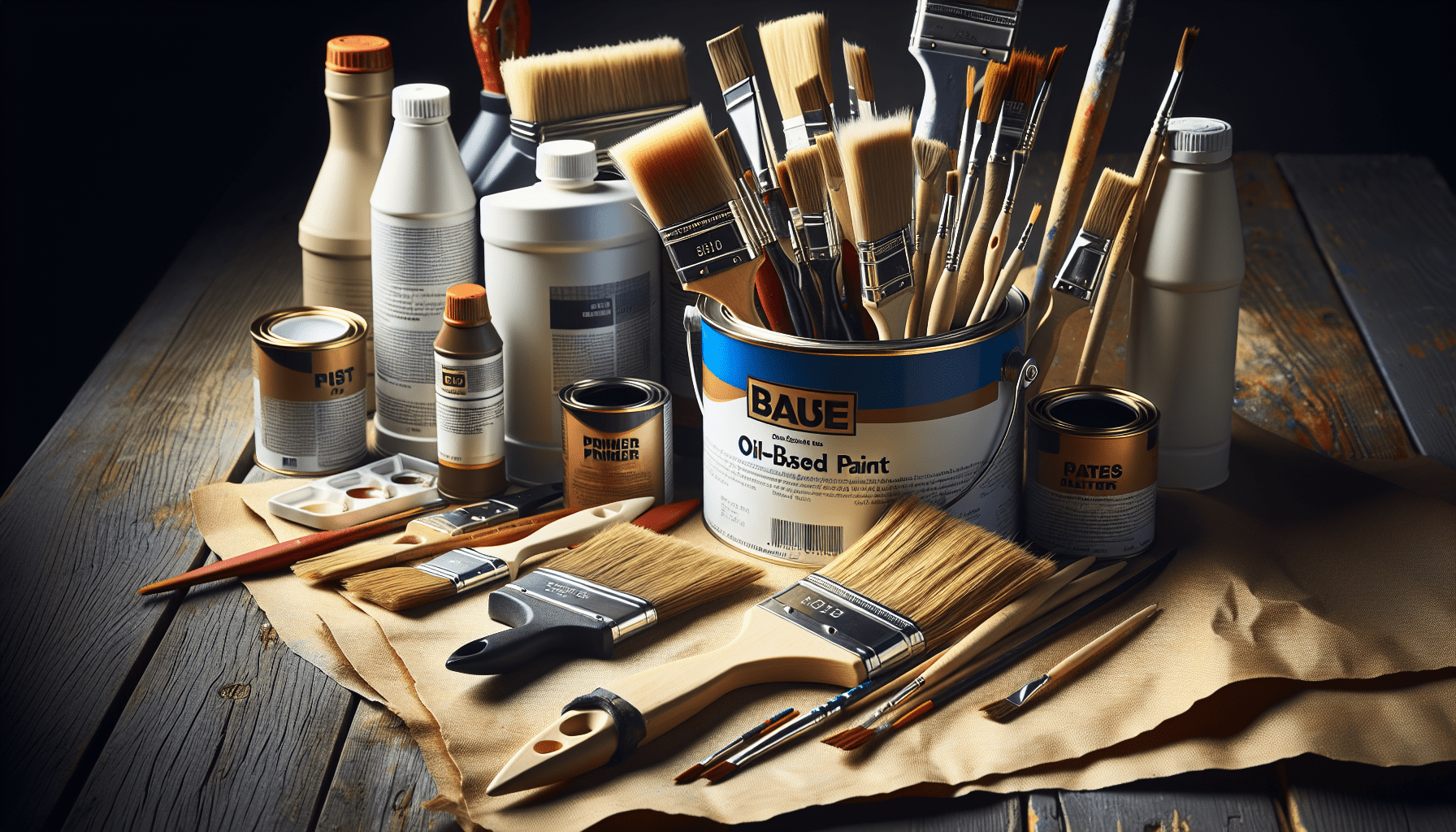Watch as mystery and allure unfold from the layers of time-worn gloss coating your prized oil painting. “How to Remove Varnish From Oil Painting” is an in-depth guide designed to empower you with the knowledge, techniques, and precautions necessary to successfully strip away the old veneer from your artwork. Recapturing the vibrancy of colours and restoring the integrity of your piece is now within your grasp, as you learn expert methods to carefully lift the varnish, thereby breathing new life into your oil painting.
Understanding Varnish and Its Purpose
What is varnish?
Varnish, in the context of paintings, is a transparent layer applied as a final coat to the painted surface. It serves as a protective barrier between the painting and its environment. Made from a combination of a drying oil, a resin, and a thinner or solvent, varnish hardens after application to a durable and resistant finish, providing oil paintings with an additional layer of defense against dust, dirt, and various airborne pollutants.
Why is varnish used on oil paintings?
Besides acting as a protective barrier, varnish also enriches the appearance of the painting. It is used on oil paintings to enhance the vibrancy of the colors and provide a uniform gloss to the entire piece. Additionally, varnish can help to protect oil paintings from hazardous ultraviolet light, which can cause the colors to fade over time, and it also makes the surface easier to clean in the future without directly affecting the underlying paint.
Effects of aging on varnish
Over time, the varnish layer on oil paintings can become yellowed or darkened due to aging and exposure to various environmental factors such as light, humidity, and temperature variations. This can obstruct the original colors and details of the painting, often leading to a dull and aged appearance. In some cases, the varnish may crack, peel, or become blotchy, potentially damaging the artwork. Thus, periodic removal and reapplication of varnish is important for the preservation and restoration of oil paintings.
Preparation and Safety Measures
Gather necessary supplies
Prior to beginning the process of varnish removal, ensure you have all necessary supplies on hand. This includes a suitable solvent or varnish remover, a soft cloth or cotton swab, rubber gloves, protective eyewear, and adequate lighting. It is also advisable to have a magnifying glass for close-up inspection and a clean surface to place your tools and supplies.
Set up a well-ventilated workspace
The solvents used in varnish removal can emit strong and potentially harmful fumes. Therefore, it’s essential to set up in a well-ventilated workspace. This not only creates a safer environment by allowing the fumes to dissipate quickly but also reduces the risk of accumulated vapors, which could potentially ignite.
Wear protective gear
Handling solvents can be potentially hazardous, so it’s essential to protect yourself adequately. Wear rubber gloves to protect your hands from any chemical substances, and consider using a mask to prevent inhalation of fumes. Protective eyewear is also important to prevent any splashes of solvent from reaching your eyes.

Testing the Varnish
Select a small inconspicuous area
Before proceeding with the entire painting, it’s crucial to test the varnish removal on a small, inconspicuous area of the painting first. This allows you to judge the reaction of the varnish and paint to the solvent without risking noticeable damage to the artwork.
Apply solvent to the area
After selecting the test area, apply a small amount of solvent using a soft cloth or cotton swab. It is important to apply the solvent sparingly, as too much could potentially damage the paint beneath the varnish.
Observe the reaction
After applying the solvent, observe the reaction of the varnish and the paint. If the varnish starts to dissolve and doesn’t appear to harm the paint, the solvent is likely a good choice for the job. However, if the paint appears to thin or change color, a different solvent should be used.
Choosing the Right Solvent
Identify the type of varnish used
Different types of varnish respond differently to different solvents. Therefore, it’s necessary to identify the type of varnish used on the painting. This can sometimes be accomplished by research or by reaching out to knowledgeable sources like art supply stores or professional conservators.
Consider the sensitivity of the oil paint
Certain types of oil paint are more sensitive to solvents than others. As such, you should always be aware of the composition and sensitivity of your painting’s oil paint. This will help in the selection of the least harmful and most effective solvent.
Research solvent options
There are numerous solvent options available, each with its strengths and drawbacks. It’s important to research the options thoroughly and understand their respective health and safety implications, drying times, and effects on paint and varnish.

Application of Solvent
Dampen a soft cloth or cotton swab with solvent
Once the most suitable solvent is chosen, it should be applied using a soft cloth or cotton swab. Dampen the cloth or swab with the solvent, being careful not to over-saturate it to avoid drips that could damage untested areas of the painting.
Gently dab the varnished surface
Beginning in a small section, gently dab the varnished surface with the solvent-dampened cloth or swab. It’s important to use a dabbing motion rather than a wiping or scrubbing motion, as the latter could potentially damage the underlying paint.
Work in small sections
Work systematically, treating one small section of the painting at a time. This enables you to maintain control over the process, reduces the risk of accidental damage, and ensures that the solvent isn’t left on the surface for too long.
Removing Varnish Layer
Use a combination of solvent and gentle pressure
The combination of solvent and gentle pressure should start to lift the varnish layer away from the paint. Remember to monitor the process and adjust the amount of solvent or pressure as needed.
Avoid excessive force
Applying too much force or using abrasive materials can damage the paint layer underneath. Always use a soft cloth or cotton swab and employ gentle, careful movements.
Change to clean cloth or swab as needed
As the solvent picks up the varnish, the cloth or swab can become saturated. To maintain effectiveness and avoid spreading dissolved varnish, change to a clean cloth or swab when needed.
Cleaning Residual Varnish
Inspect the painting for any remaining varnish
Following the initial varnish removal, thoroughly inspect the painting for any remaining varnish. Use a magnifying glass if necessary and look at the painting from different angles to detect any residual varnish that may not be evident when looking at the painting straight on.
Repeat solvent application if necessary
If residual varnish is detected, repeat the solvent application as necessary. Remember to always use gentle and careful application to protect the paint layer.
Ensure complete removal
The removal of all varnish is crucial to prevent the new varnish layer from adhering poorly or inconsistently. Take your time in this process to ensure complete removal of all varnish.
Drying and Post-Treatment
Allow the painting to dry completely
After the varnish is removed, the painting should be left to dry completely. This can take anywhere from a few hours to a few days, depending on the type and amount of solvent used.
Evaluate the condition of the oil paint
Once the painting is dry, you should evaluate the condition of the oil paint. If the paint appears dull or lacks vibrancy, it may benefit from the application of a new varnish layer.
Consider applying a new protective varnish
Applying a new protective varnish can enhance the colors, increase the shine, and provide a layer of protection for the painting. It is often recommended to do so once the painting is fully cleaned and restored.
Seeking Professional Help
When to consult a professional conservator
If you’re unsure about any part of the varnish removal process, and particularly if the painting has considerable value or sentiment to you, you should consider consulting a professional conservator. The same advice holds if the varnish removal process seems to be causing damage to the painting.
Restoration options and costs
Professional conservators offer a variety of restoration services, including varnish removal. The cost of these services vary widely depending on the painting’s size, condition, and the specifics of the needed restoration. Obtain detailed estimates and understand what guarantees the conservator offers before committing to a service.
Preserving the painting’s value
Proper varnish removal and restoration by a professional conservator can significantly preserve and even enhance the painting’s value. Ignoring the need for restoration or attempting to do it yourself without the necessary skills and knowledge can lead to irreversible damage and a considerable decrease in a painting’s value.
Preventive Measures and Long-Term Care
Proper storage and display
Proper storage and display of your painting can prevent a lot of potential damage. Avoid places with high humidity, extreme temperatures, or direct sunlight.
Regular dusting and cleaning
Regular light dusting can help maintain the painting’s appearance and prolong the life of the varnish. Avoid using water or other cleaners, which can damage the varnish and paint.
Avoiding direct sunlight and extreme conditions
Sunlight emits UV rays that can cause the varnish to yellow over time. Similarly, extreme conditions such as high humidity and rapid temperature changes can cause the varnish to crack or become moldy. Always aim to display your painting in conditions with consistent and moderate temperature and humidity, away from direct sunlight.



